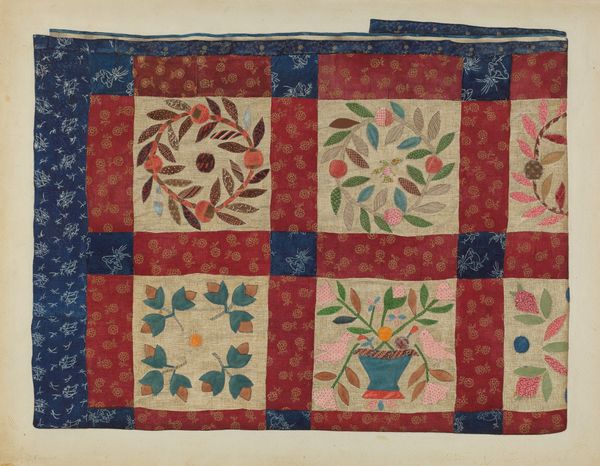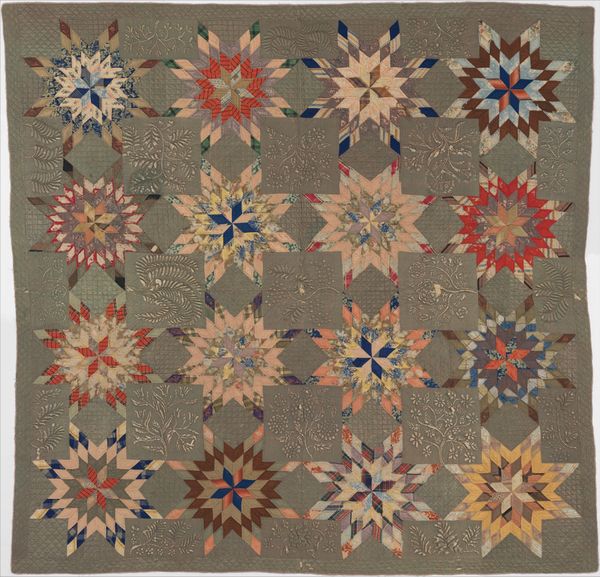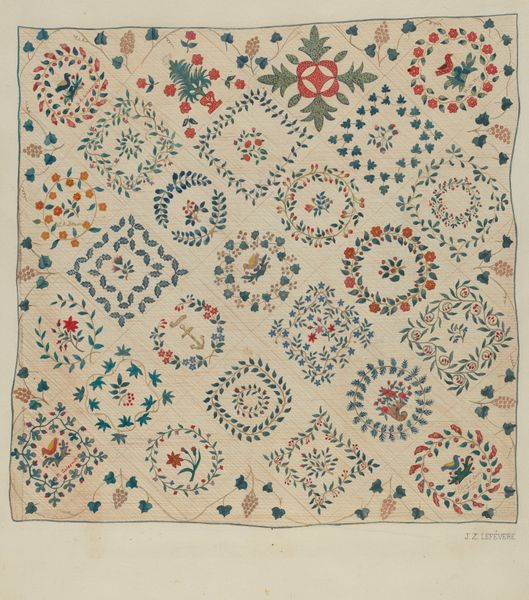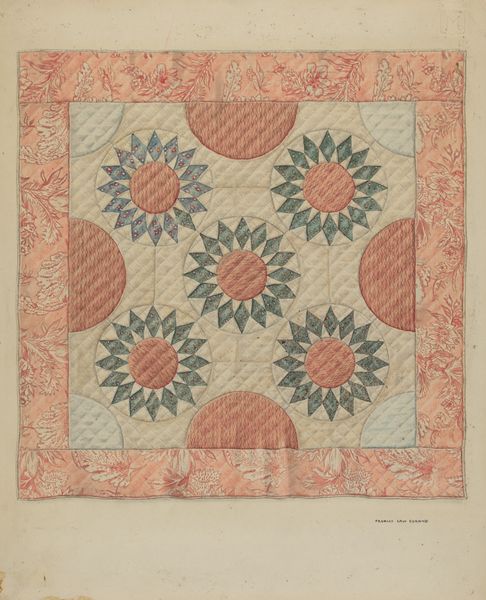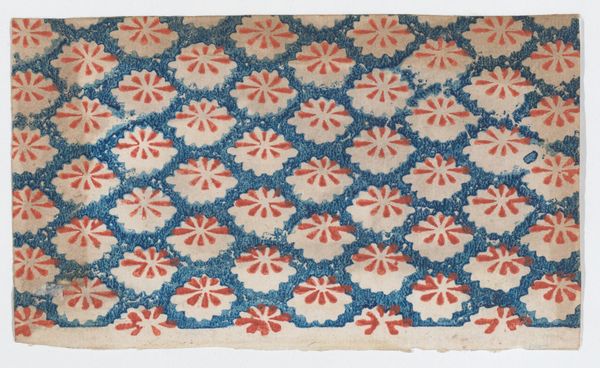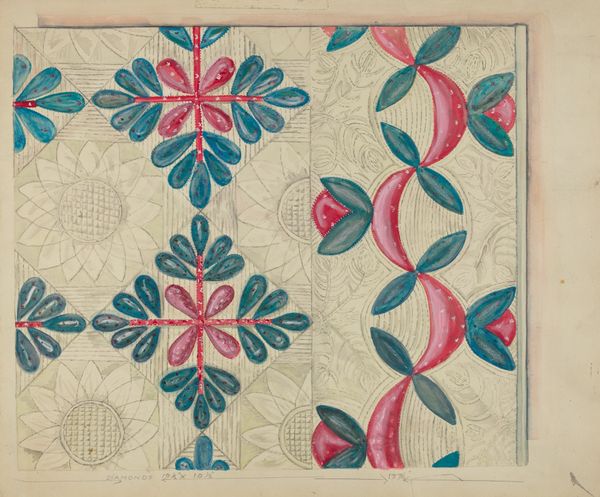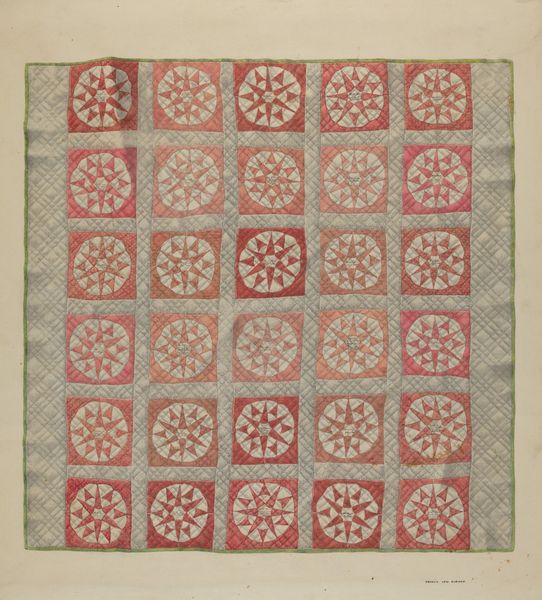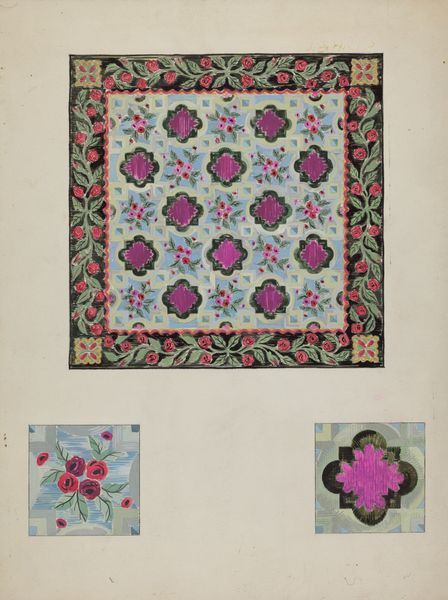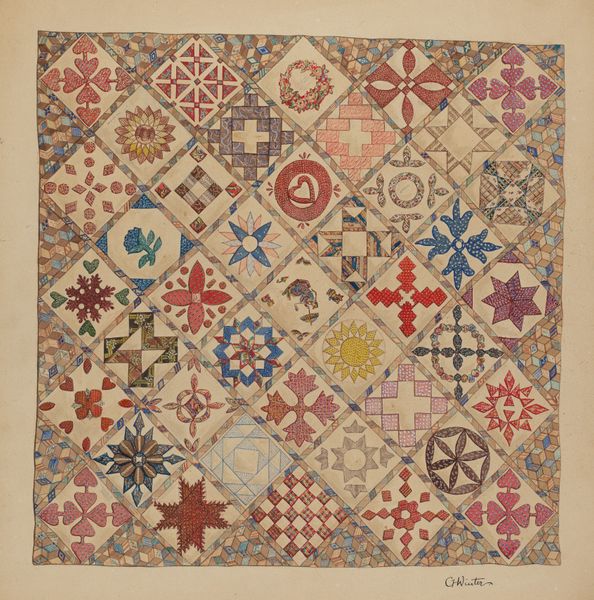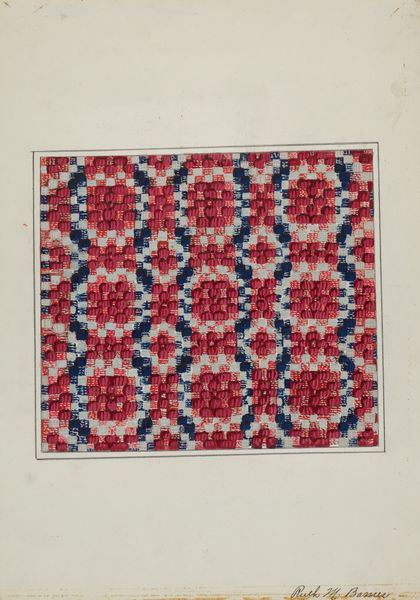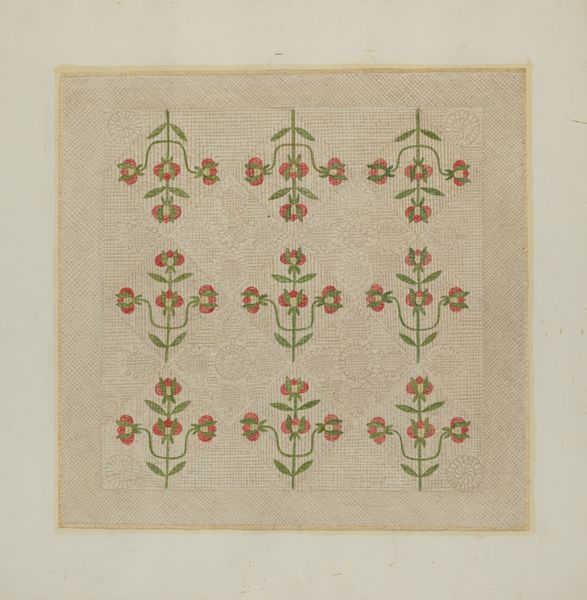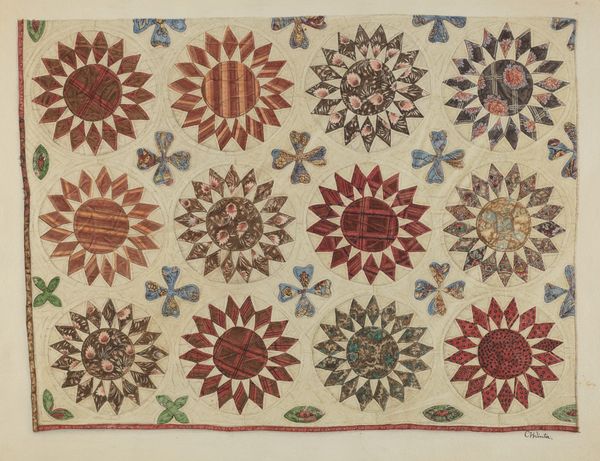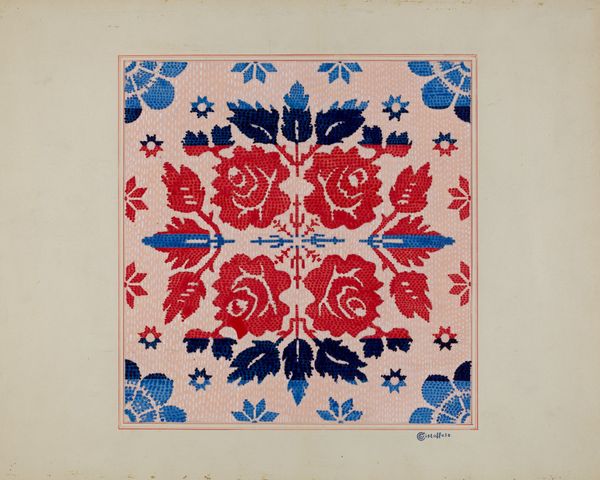
fibre-art, textile
#
fibre-art
#
water colours
#
textile
#
folk-art
Dimensions: overall: 57 x 54.9 cm (22 7/16 x 21 5/8 in.)
Copyright: National Gallery of Art: CC0 1.0
Editor: This is A. Zimet’s "Applique and Patchwork Quilt," made around 1939. It appears to be textile and watercolor on paper. The designs feel so intimate, almost like little secrets stitched into each square. What do you make of it? Curator: I see it as a powerful statement of identity. During the 1930s, particularly amidst the Great Depression, crafts like quilting weren’t just hobbies; they were vital forms of economic and social agency, especially for women. Consider how folk art was, and continues to be, framed by institutions. Editor: So you’re saying the quilt has political implications beyond its charming exterior? Curator: Precisely. The choice to create something beautiful and useful from limited resources challenged conventional notions of art and labor. Who decides what's "high" art versus "low" craft? The museum system often dictates that, shaping what we value. Do you think the geometric and floral patterns offer any clues to Zimet's personal background? Editor: Hmm, the patterns almost remind me of traditional crafts from different cultural backgrounds mashed together, so perhaps Zimet sought to unify identities through her work? Curator: That’s interesting. We could research if such textile patterns were prominent in any marginalized group during the time. We can think about how this quilt functioned within its community. Was it purely functional, a decorative object displayed proudly, or something more symbolic? What function did A. Zimet expect it to serve in her community? Editor: I never thought a quilt could tell such a complex story. It really opens my eyes to how even everyday objects carry historical and cultural weight. Curator: Exactly. Analyzing art through a historical lens makes you consider power structures and their influence on what’s created and how it is displayed or seen by an audience. Quilts challenge these structures by elevating traditional crafts to the level of fine art. It speaks volumes.
Comments
No comments
Be the first to comment and join the conversation on the ultimate creative platform.
